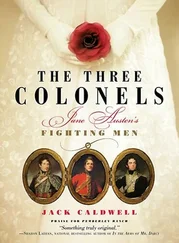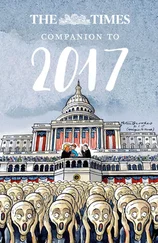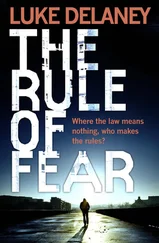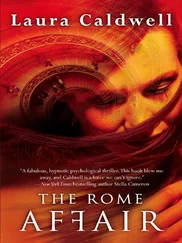Here I will convey the nature of the enemy I face, whose rising power lies at the heart of my actions. Reader, you will wonder why I have dated this book 1467, some thirty years before I wrote these words. It was for this reason: in that year the war began which we are still fighting, and which we are now losing. Three years earlier His Holiness, Paul the Second, fired the court abbreviators, making clear his intentions toward my brotherhood. Yet the members of my uncle's generation were powerful men, with much influence, and the expelled brethren flocked to the Accademia Romana, which good Pomponio Leto sustained. Paul saw that our number persisted, and his jury increased, hi that year, 1461, he crushed the Academy by force. So that all would know the strength of his determination, he imprisoned Pomponio Leto, and had him accused as a sodomite. Others of our group were tortured. One, at least, would die.
Now we are challenged by an old enemy, suddenly reborn. This new spirit grows in strength, and finds a more powerful voice, so that I have no choice but to construct, with the assistance of friends wiser than I, this device whose secret I disguise here. Even the priest, philosopher though he may be, is not equal to it.
Continue, reader, and I will tell more.
The court abbreviators were the humanists, Paul explained. The pope thought humanism bred moral corruption. He didn't even want children to hear the works of the ancient poets. Pope Paul made an example of Leto. For some reason, Francesco took it as a declaration of war.
Colonna's words stayed with me that night, and each night that followed. For the first time, I missed a morning run with Katie, too tired to pull myself from bed. Something told me Paul was wrong about the new riddle-How many arms from your feet to the horizon?-and that Eratosthenes and geometry were not the solution. Charlie confirmed that the distance to the horizon would depend on the height of the observer; and even if we could find a single answer and calculate it in braccia, I realized, the answer would be enormous, far too big to be useful as a cipher.
When did Eratosthenes make that calculation? I asked.
Around 200 b.c.
That sealed it.
I think you're wrong, I said. All the riddles so far have to do with Renaissance knowledge, Renaissance discoveries. He's testing us on what humanists would've known in the 1400s.
Moses and comma had to do with linguistics, Paul said, trying on the idea for size. Correcting faulty translations, like what Valla did with the Donation of Constantine.
And the Rithmornachia riddle had to do with math, I went on. So Colonna wouldn't use math again. I think he's choosing a different discipline every time.
It was only when Paul looked so surprised by the clarity of my thinking that I realized how my role had changed. We were equals now, partners in the enterprise.
The two of us began meeting at Ivy each night, back in those days when he kept the President's Room in better shape, expecting Gil to check up on him at any minute. I ate dinner upstairs with Gil and with Katie, who was only weeks away from beginning the bicker process, then returned downstairs to join Paul and Francesco Colonna. I thought it just as well to leave her alone, hard as she was trying to position herself for admission to the club. Busy with the rituals, she seemed not to make much of my disappearances.
But the night after I missed my third morning run, all of that changed. I was on the cusp of a solution to the riddle, I thought, when by sheer accident she realized how I was spending our hours apart.
This is for you, she said, letting herself into our room in Dod.
Gil had left the door unlocked again, and Katie no longer knocked when she thought I was alone.
It was a cup of soup she'd brought me from a local deli. She thought I'd been holed up with my thesis this whole time.
What are you doing? she asked. More Frankenstein?
Then she saw the books spread out around me, each with some reference to the Renaissance in the title.
I never thought it was possible, to lie without knowing it. I'd strung her along for weeks on a raft of pretexts-Mary Shelley; insomnia; the pressures we were both facing, which made it hard to spend time together— and eventually it carried me away, drifting from the truth so slowly that the distance each day seemed no greater than the last. She knew I was working on Paul's thesis, I thought; she just didn't want to hear about it. That was the arrangement we'd come to, without ever having to say it.
The conversation that followed was all silences, hashed out in the way she looked at me and I tried to hold her stare. Finally, Katie put the cup of soup on my dresser and buttoned her coat. She looked around the room, as if to remember the details of where things stood, then returned to the door and locked it before letting herself out.
I was going to call her that night-as I knew she expected me to, when she returned to her room alone and waited by the phone, the way her roommates later told me she did-except that something got in the way. Fantastic mistress, that book, flashing leg at all the right times. Just as Katie left, the solution to Colonna's riddle dawned on me; and like a whiff of perfume and an eyeful of cleavage, it made me lose sight of everything else.
The horizon in a painting was the solution: the point of convergence in a system of perspective. The riddle wasn't about math; it was about art. It fit the profile of the other puzzles, relying on a discipline peculiar to the Renaissance, developed by the same humanists Colonna seemed to be defending. The measurement we needed was the distance, in braccia , between the foreground of the painting, where the characters stood, and the theoretical horizon line, where the earth met the sky. And remembering Colonna's preference for Alberti in architecture, when Paul used De re aedificatoria to decipher the first riddle, it was to Alberti I turned first. On the surface I intend to paint , Alberti wrote in the treatise I found among Paul's books , I decide how large I wish the human figures in the foreground of the painting to be. I divide the height of this man into three parts, -which will be proportional to the measure commonly called a braccio; for, as can be seen from the relationship of his limbs, three braccia is just about the average height of a mans body. The proper position for the centric point is no higher from the base line than the height of the man to be represented in the painting. I then draw a line through the centric point, and this line is a limit or boundary for me, which no quantity exceeds. This is why men depicted standing furthest away are a great deal smaller than the nearer ones.
Alberti's centric line, as the accompanying illustrations made clear, was the horizon. According to this system, it was placed at the same height as a man drawn standing in the foreground, who in turn was three braccia tall. The solution to the riddle-the number of braccia from the man's feet to the horizon-was just that: three.
It took Paul only a half hour to figure out how to apply it. The first letter of every third word in the following chapters, when placed in a row, spelled out the next passage from Colonna.
Now, reader, I will tell you the nature of the composition of this work. With the help of my brethren, I have studied the code-making books of the Arabs, Jews, and ancients. I have learned the practice called gematria from the kabalists, according to which, when it is written in Genesis that Abraham brought 318 servants to help Lot, we see that the number 318 signifies only Abraham s servant Eliezer, for that is the sum of the Hebrew letters of Eliezers name. I have learned the practices of the Greeks, whose gods spoke in riddles, and whose generals, as the Mythmaker describes in his History, disguised their meanings cunningly, as when Histiaeus tattooed a message on his slaves scalp, so that Aristagoras might shave the man's head and read it.
Читать дальше












